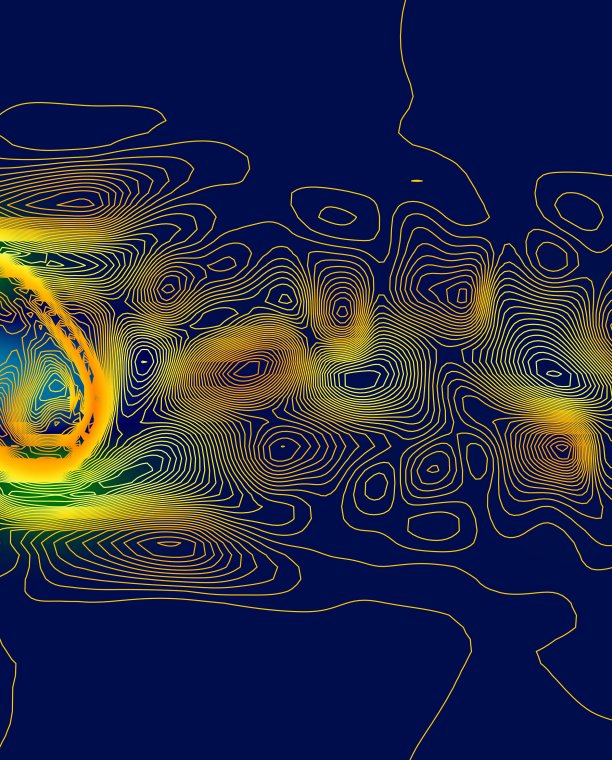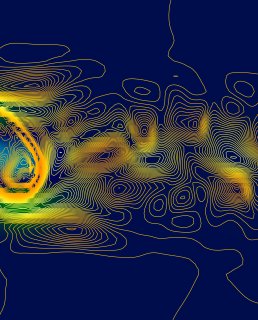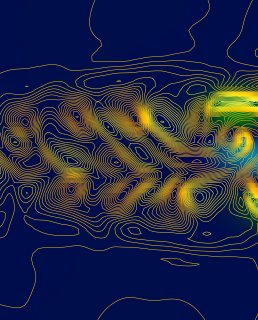
Top Prize Editor’s Choice 2023-24
The solar wind blows outward from the sun, generating what we might think of as space weather that affects our satellites, space missions and even our magnetosphere, atmosphere and life here on Earth. Switchbacks are a common but little-understood phenomenon in the solar wind where the magnetic field lines reverse direction and form a “kink.” Since the solar wind is a plasma, the flow of charged particles follows the kinked path of the magnetic field, like water following the wave of energy as it moves towards the seashore.
This image is generated from a Magnetohydrodynamic (MHD) simulation of a switchback. Light blue is where the magnetic field is negative (reversed direction), while green is where the field is positive. The gold lines show the plasma density, and the lines swirl tightly around the kinked form of the magnetic field.
The purpose of this simulation is to study how the switchback decays and what factors make it more stable in the solar wind, so that researchers can better understand how these structures are made and how they might contribute to turbulence and heating in the solar wind.
Credit:
Maile Marriott
Physics Ph.D. Student




